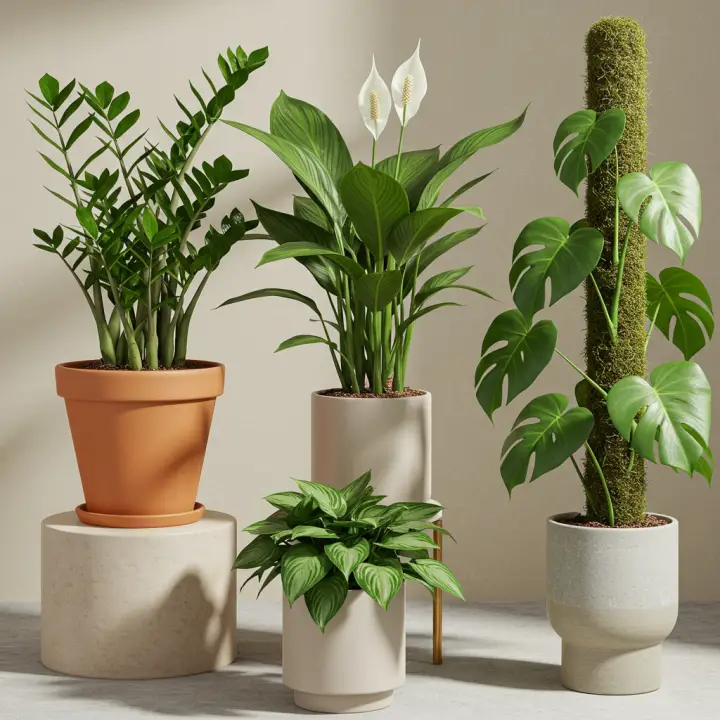Dreaming of a lush, thriving indoor oasis in the Sunshine State? This guide dives into the best indoor house plants for Florida, showcasing varieties that naturally love our unique climate and are easy to care for. Discover the top picks for your home, along with essential tips to keep them flourishing.
Florida’s vibrant climate isn’t just great for outdoor activities; it’s also a fantastic environment for many indoor plants! With its abundant sunshine and high humidity, the Sunshine State offers ideal conditions for a wide range of houseplant species to thrive inside your home. Whether you’re a seasoned plant parent or just starting your green journey, choosing the right flora can transform your living space into a refreshing, natural sanctuary.

Why Florida’s Climate Influences Your Indoor Plant Choices
Understanding Florida’s specific environmental factors is key to selecting houseplants that will truly flourish. While many plants enjoy the warmth, our climate has nuances that affect indoor care.
Humidity: A Plant Paradise
Florida’s naturally high humidity is a huge advantage for many tropical plants. This means less effort to artificially humidify your home for species that crave moist air, such as ferns and many aroids.
Temperature: Consistently Warm
Our mild winters and hot summers mean indoor temperatures generally remain pleasant for tropical plants. However, air conditioning can sometimes create dry pockets, so observation is key.
Light: Bright and Abundant
Florida’s intense sunlight is a blessing, but it can be too much for some houseplants directly through a window. Most indoor plants prefer bright, indirect light, so mindful placement is crucial to prevent scorched leaves.
Top 10 Best Indoor House Plants for Florida
Considering Florida’s unique environment, these plants stand out for their adaptability, beauty, and ease of care.
1. ZZ Plant (Zamioculcas zamiifolia): The Indestructible Choice
Why it’s great for Florida: Tolerates neglect, low light, and periods of dryness. Perfect for busy Floridians!
Care Tip: Water sparingly. It’s more tolerant of underwatering than overwatering.
2. Snake Plant (Sansevieria trifasciata): Air-Purifying Powerhouse
Why it’s great for Florida: Extremely hardy, air-purifying, and thrives on neglect. Loves bright, indirect light but tolerates low light.
Care Tip: Let the soil dry out completely between waterings.
3. Pothos (Epipremnum aureum): The Versatile Viner
Why it’s great for Florida: Easy to grow, adaptable to various light conditions (avoid direct sun), and loves humidity. Great for hanging baskets or shelves.
Care Tip: Water when the top inch of soil feels dry. Yellow leaves indicate overwatering.
4. Philodendron (Heartleaf/Brasil): Classic Tropical Charm
Why it’s great for Florida: Similar to Pothos in care, with beautiful heart-shaped leaves. They appreciate Florida’s humidity.
Care Tip: Provide bright, indirect light for best growth.
5. Peace Lily (Spathiphyllum): Elegant and Forgiving
Why it’s great for Florida: Its dramatic droop tells you exactly when it needs water, and it loves humidity. Produces elegant white blooms.
Care Tip: Keep soil consistently moist but not soggy.
6. Orchids (Phalaenopsis): Surprisingly Easy
Why it’s great for Florida: Florida’s high humidity is exactly what these beauties crave. They are simpler to care for than many believe.
Care Tip: Use a specialized orchid potting mix and water weekly with ice cubes or by soaking.
7. Monstera Deliciosa (Swiss Cheese Plant): The Statement Piece
Why it’s great for Florida: Thrives in warm, humid conditions, making Florida its natural habitat. Its large, fenestrated leaves create a tropical statement.
Care Tip: Provide bright, indirect light and allow the top few inches of soil to dry before watering.
8. Prayer Plant (Maranta leuconeura): Foliage Art
Why it’s great for Florida: Loves high humidity and indirect light. Its leaves fold up at night and open during the day, adding dynamic beauty.
Care Tip: Keep the soil consistently moist (but not wet) and use distilled or rainwater if possible.
9. Cast Iron Plant (Aspidistra elatior): Ultimate Resilience
Why it’s great for Florida: Lives up to its name – extremely tough, tolerates low light, infrequent watering, and a range of temperatures.
Care Tip: Almost impossible to kill! Water only when the soil is completely dry.
10. Kimberly Queen Fern (Nephrolepis obliterata): Lush Greenery
Why it’s great for Florida: A robust fern that thrives in Florida’s humidity, offering lush, vibrant greenery. It’s less messy than Boston ferns.
Care Tip: Prefers bright, indirect light and consistently moist soil.
Essential Care Tips for Florida Indoor Plants
Even the most adaptable plants need proper care. Here’s how to keep your Florida houseplants happy.
Watering Wisely
Florida’s humidity can sometimes mean less frequent watering is needed. Always check the soil moisture before watering. Stick your finger an inch or two into the soil; if it feels dry, it’s time to water. Avoid overwatering, which is a common killer of houseplants.
Optimal Lighting Placement
While Florida has intense sun, most indoor plants prefer bright, indirect light. Place plants near east or north-facing windows, or a few feet back from south or west-facing windows to diffuse the light. Invest in sheer curtains if needed.
Embracing Humidity (and Counteracting AC)
Florida’s natural humidity is a gift, but air conditioning can dry out the air, especially in colder months. For plants that absolutely love high humidity (like ferns and prayer plants), consider:
Pebble trays: Place plants on a tray filled with pebbles and water (ensure pots don’t sit directly in water).
Grouping plants: Plants release moisture, creating a micro-humidity zone.
Misting: Some plants appreciate occasional misting, especially in drier indoor environments.
Soil and Repotting
Use a well-draining potting mix. Most tropical plants prefer a mix with perlite or orchid bark for aeration. Repot when the plant becomes root-bound, usually every 1-2 years during spring or early summer.
Pest Patrol
Florida’s warmth can mean active pests. Regularly inspect your plants for signs of common pests like spider mites, mealybugs, and scale. Early detection and treatment (e.g., with neem oil or insecticidal soap) are crucial.
Fertilizing Appropriately
Most houseplants benefit from fertilizing during their active growing season (spring and summer). Use a balanced liquid fertilizer diluted to half strength, following product instructions. Reduce or stop fertilizing in fall and winter.
Where to Find Your Perfect Florida Houseplants
Local Nurseries: Often have the best selection of plants suited for local conditions and knowledgeable staff.
Big Box Stores (Home Depot, Lowe’s): Good for common varieties and often more budget-friendly. Inspect plants carefully for pests.
Online Retailers: Offer a vast selection, including rare varieties. Ensure reputable sellers with good reviews.
FAQs About Indoor House Plants in Florida
Q: What’s the biggest challenge for indoor plants in Florida?
A: Overwatering due to perceived humidity or underestimating the strength of direct sunlight through windows. Also, managing indoor humidity when AC is running constantly can be a challenge for some.
Q: Do I need to water less in Florida due to humidity?
A: It’s possible! The higher ambient humidity reduces the rate of evaporation from the soil. Always check the soil moisture before watering rather than sticking to a schedule.
Q: Are tropical plants always the best choice here?
A: Generally, yes. Many tropical plants naturally love warm temperatures and high humidity, which mimics their native environments and aligns well with Florida’s climate.
Q: How do I deal with air conditioning drying out my plants?
A: Use pebble trays, group plants together, or consider a small humidifier for specific humidity-loving plants. Avoid placing plants directly in the path of AC vents.
Q: Can I put my indoor plants outside sometimes?
A: Many indoor plants enjoy a “vacation” outside in a shady, protected spot when temperatures are consistently warm. Just be cautious of direct sun exposure, sudden temperature drops, and potential pests. Acclimate them gradually.
Conclusion
Choosing the best indoor house plants for Florida is all about understanding our unique environment and matching it with adaptable, beautiful species. From the resilient ZZ Plant to the lush Monstera, there’s a perfect green companion for every Florida home. With a little attention to light, water, and humidity, your indoor garden will thrive, bringing beauty and a breath of fresh air to your Sunshine State sanctuary. Happy planting!

